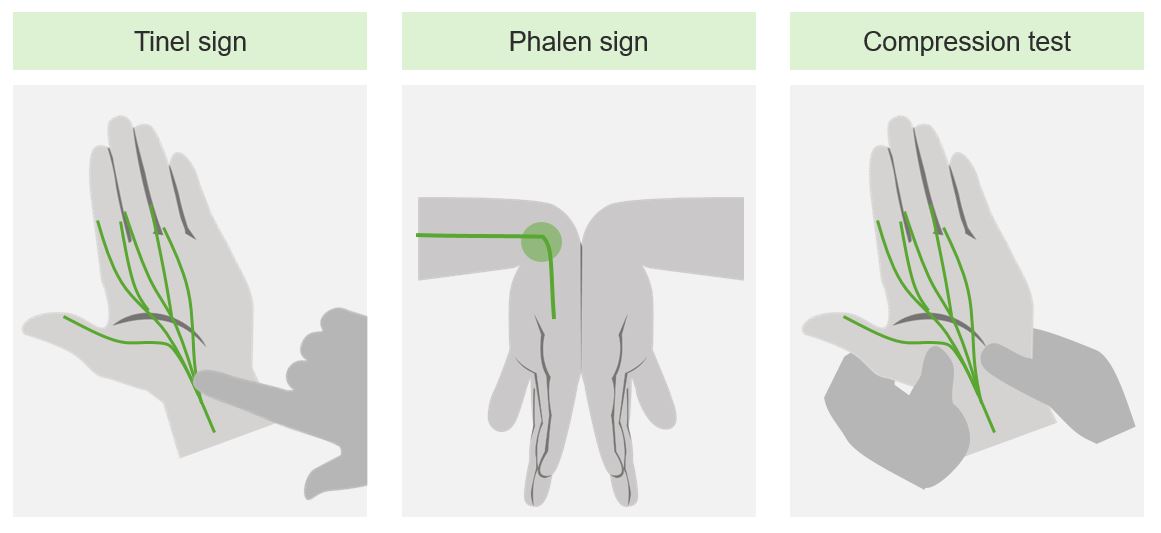Playlist
Show Playlist
Hide Playlist
Carpal Tunnel Syndrome
-
Slides Carpal tunnel Special Surgery.pdf
-
Download Lecture Overview
00:01 Welcome back. 00:02 Thanks for joining me on this discussion of Carpal Tunnel Syndrome in this section of vascular surgery. 00:08 Let's begin by discussing the potential etiologies of carpal tunnel. 00:12 It's associated with the compression of the median nerve from various reasons. 00:18 We generally think of it as a multifactorial disease, and heavily associated with overuse. 00:23 For example, a patient may be typing on the keyboard all day long. 00:28 There's also an association with Body Mass Index with obesity associated with it. 00:34 And there's a slight preponderance of female patients. 00:38 Short patient's, previous risk fractures, and as an occupational hazard. 00:47 On physical examination, and historically, the patient would complain of numbness in the hands marginally, in the distribution of the median nerve. 00:57 Sometimes patient report heaviness in the hand, like it falling asleep. 01:02 And patient may have decreased grip strength, or at least decrease when compared to the contralateral side and thernar muscle wasting. 01:12 Let's now discuss the nerve distribution, and symptom distribution with patients in carpal tunnel syndrome. 01:18 When patients complain of pain, it's usually on the volar aspect of the hand. 01:21 it's usually on the volar aspect of the hand. 01:23 That's the palmar side. 01:25 In terms of sensory deficits, it usually involves a palmar aspect of digits one, two, and three and the radial half of the fourth digit. 01:33 and the radial half of the fourth digit. 01:33 And lastly, motor atrophy or weakness in the median nerve distribution, specifically in the thinner muscles, or the fatty pad, or the muscular pad just underneath your thumb. 01:45 Many patients initially present with the electric shock like sensations that awaken them from sleep. 01:52 Let's discuss some classic signs of carpal tunnel syndrome. 01:56 First, the Tinel sign. 01:57 The Tinel sign is elicited tingling in the distribution of the media nerve by tapping over the media nerve. 02:04 Next, the Phalen sign. 02:07 The Phalen sign is described as tingling in the median nerve distribution with hyperflexion of the wrist. 02:13 And lastly, Compression test. 02:15 The compression test tries to mimic the carpal tunnel syndrome by full compression of the carpal tunnel. 02:21 This may demonstrate the same neurological findings. 02:27 Laboratories are not going to be helpful. 02:30 So don't get routine labs on these patients. 02:33 And similarly, imaging studies are generally not helpful either. 02:37 This disease process is largely dependent on a physical examination and a good history. 02:44 Nerve conduction velocities in Electromyography or EMGs are very helpful both to confirm the diagnosis and to detect permanent nerve damage from chronic compression. 02:54 Many insurance companies even require this confirmation step prior to approving any operative procedures.
About the Lecture
The lecture Carpal Tunnel Syndrome by Kevin Pei, MD is from the course Special Surgery.
Included Quiz Questions
Which of the following signs is described as tingling or pain elicited by tapping over the median nerve?
- Tinel's sign
- Phalen's sign
- Trousseau's sign
- Chvostek's sign
- Durkan's sign
Which of the following symptoms are NOT typically seen in carpal tunnel syndrome?
- Tingling of the small finger
- Tingling of the radial 3 and a half digits
- Decreased grip strength
- Numbness
- Muscle atrophy
Customer reviews
5,0 of 5 stars
| 5 Stars |
|
5 |
| 4 Stars |
|
0 |
| 3 Stars |
|
0 |
| 2 Stars |
|
0 |
| 1 Star |
|
0 |






